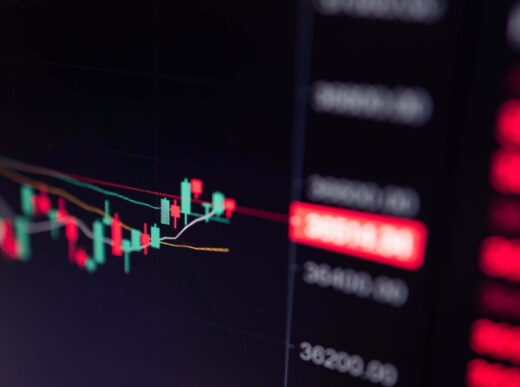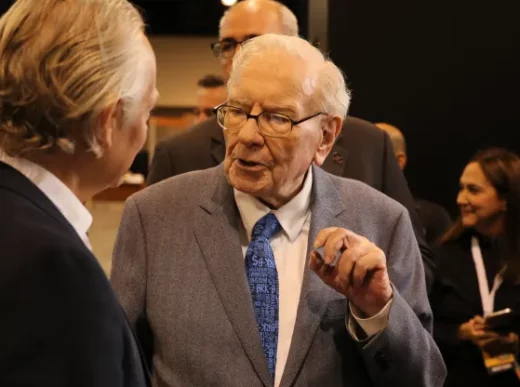The United States witnessed a startling surge in inflation starting from early 2021, as the economy emerged from the clutches of the Covid-19 pandemic. This inflationary whirlwind saw prices skyrocket, with the annual rate climbing from a modest 1.2% in December 2020 to an alarming 9.1% by June 2022, marking a 40-year high.
In the midst of this tumultuous economic landscape, Nobel Prize-winning economist Joseph Stiglitz has raised a formidable critique of the Federal Reserve’s response to the inflationary conundrum. Stiglitz contends that the Fed faltered by failing to comprehend the true origins of the inflation surge, an oversight that had profound consequences for the nation’s economic trajectory.
The Federal Reserve embarked on a journey of interest rate hikes only in March 2022, a significant lag from the onset of the inflation surge. During this period, Chair Jerome Powell persistently characterized inflation as “transitory,” suggesting that it would subside with ease.
Stiglitz, however, takes issue with the Fed’s initial stance on inflation. He asserts that the central bank erroneously attributed the inflationary wave to excessive demand, a misconception stemming from a lack of comprehensive analysis. Speaking with CNBC’s Steve Sedgwick on the sidelines of the Ambrosetti Forum, Stiglitz stated that the Fed failed to perform its due diligence in diagnosing the root causes of inflation.
The economist’s assessment diverges significantly from the Fed’s initial perspective. Stiglitz posits that the surge in prices was frequently driven by factors unrelated to demand, such as severe shortages of critical components like semiconductor chips.
In a bid to quell the inflationary tempest and realign it with its 2% target, the Federal Reserve has executed a total of 11 interest rate hikes, leading to a target range of 5.25% to 5.5%. This level of interest rates has not been witnessed in over 22 years.
Substantial headway has been made, evident in the 12-month headline consumer price index reading, which plummeted to a mere 3.2% on a yearly basis in July. Moreover, multiple data points suggest that inflationary pressures have significantly abated.
The Anatomy of “Bad Economics”
While Stiglitz does not foresee the aggressive monetary tightening of the past 18 months precipitating a recession in the United States, he posits that profound lessons can be gleaned from the Fed’s analysis of inflation dynamics.
The economist contends that the Fed’s initial interpretation of inflationary forces constituted “really bad economics.” The central bank’s assumption that the government’s monumental recovery program would stoke inflation was based on the premise that all the allocated funds would be expended. However, Stiglitz underscores the fact that just a few years ago, pervasive uncertainty cast a shadow over the economy.
This climate of uncertainty deterred firms from investing as they typically would have, while consumers refrained from deploying their accumulated pandemic-era savings. Consequently, total or aggregate demand remained below pre-pandemic projections.
Stiglitz elucidates, “Why was there inflation? We all know the reason. Car prices initially soared. Was it because we didn’t know how to make cars? No, we knew how to make cars. American auto companies simply forgot to place orders for chips, and without chips, car production grinds to a halt.”
A Fortuitous Policy Oversight?
Intriguingly, despite the Fed’s rapid series of interest rate hikes, the U.S. economy has exhibited remarkable resilience. However, economists remain divided over whether the tightening of financial conditions will ultimately trigger a recession.
Stiglitz introduces an intriguing hypothesis, suggesting that the economic soft landing the Fed has endeavored to engineer might materialize as a consequence of another fortuitous policy “mistake,” this time originating from the government. He points to the Inflation Reduction Act (IRA), a hallmark legislation by the Biden administration aimed at addressing manufacturing, infrastructure, and climate change concerns.
Launched slightly over a year ago, the IRA has catalyzed over $500 billion in new investments, as per Treasury estimates. Stiglitz notes that the initial projections for the act anticipated a cost of $271 billion over a decade. However, recent estimates, sourced from various channels, far exceed a trillion dollars.
This substantial stimulus to the economy, driven by the IRA’s unanticipated impact, could potentially offset the contractionary effects of the Fed’s monetary policy. Stiglitz suggests that the nation might navigate this economic terrain through a stroke of luck, with the Fed largely oblivious to the IRA’s transformative influence.
In essence, Stiglitz’s perspective serves as a poignant reminder of the complex interplay between policy decisions, economic forces, and unforeseen outcomes, highlighting the need for comprehensive analysis and adaptability in navigating the ever-evolving economic landscape.















